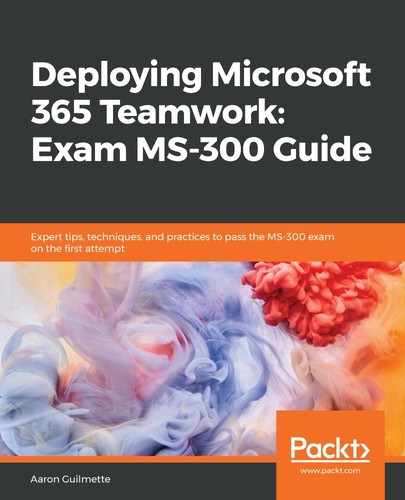The modern architecture uses Office 365 Group-connected sites. In contrast to classic architecture, modern sites have no defined hierarchy. From a security boundary perspective, a modern site is essentially the same as a classic site collection. With the introduction of Office 365 Groups (and their integration into SharePoint), Microsoft also introduced a new SharePoint organizational concept: the hub site. Whereas classic SharePoint sites and site collections are organized hierarchically, modern SharePoint sites are organized by association with a hub site.
In the following diagram, notice how the site URLs are all at a peer level—there is no path hierarchy beyond the /sites/ URL:

The two sites, EMEA and US, are designated as hubs in modern SharePoint. This means that other related sites can be grouped with them. Suppose the organization whose SharePoint architecture is pictured in the preceding diagram wants to move the responsibility or association of Project Venus from EMEA to US. In classic SharePoint architecture, this would require creating a new site under the US site collection, copying the content into it (and breaking all of the links to that content), and then destroying the source site.
With modern SharePoint, it's as simple as going into the SharePoint admin center and choosing to associate the site with a new hub. From the SharePoint admin center, note the current site associations and relative paths of the URLs:

As you can see, all of the sites are located directly underneath the /sites/ root. Hub sites are designed to be relational—that is, grouped together. There's no hierarchy in hub sites aside from the site you designate as a hub. You can't nest hub sites.
In our example, the business has decided that Project Venus now needs to be associated with the US hub site. You can see in the following screenshot that we have updated the site's logical association and grouping while maintaining its security and full path. Everyone who had access to it before has access to it now, and all of the sharing links that were bookmarked and used before can continue to be used:

This new level of flexibility is designed to help today's rapidly changing organizations to adapt as quickly as they need to, minimizing the amount of rework necessary to adapt and align their infrastructure to their strategy.
SharePoint hub sites allow you to have shared navigation and branding appear on each site associated with the hub as well as rolling up search results from associated sites.
